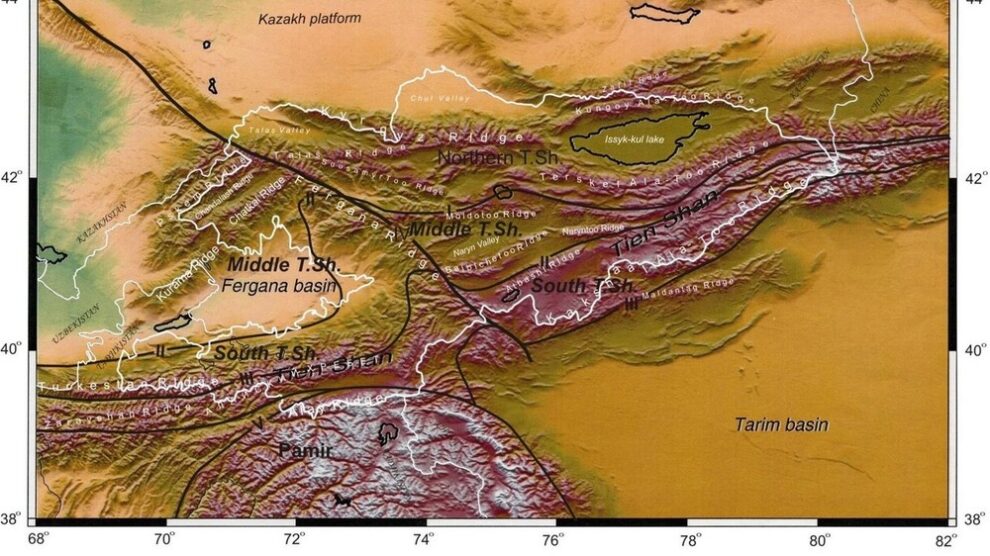AKIPRESS.COM – 2,787 earthquakes were registered on the territory of Kyrgyzstan and adjacent regions of the neighboring countries since start of the year to March. Mederbek Omuraliev, a leading researcher at the Institute of Seismology of the Academy of Sciences, spoke about this in an interview with AKIpress.
– How many earthquakes have been registered in Kyrgyzstan since the beginning of 2023? How many earthquakes occurred during the same period of 2021 and 2022? Is there an upward trend in the number of earthquakes?
– According to digital seismic stations of Kyrgyzstan, Kazakhstan, Uzbekistan, China, 2,787 earthquakes were registered in Kyrgyzstan and adjacent areas of the neighboring countries from the beginning of the year to March 2023.
About 10,000 occur in this region every year, of which 12 are tangible (6 or more points).
In 2021, a decline in seismic activity was noted. In December 2022, the K=13.3 earthquake occurred, and the active phase began. On February 23, 2023, K=15.8 earthquake occurred, and seismic activity reached a relative peak.
Then the decline phase of seismic activity followed and on March 22 there was an earthquake with K=14.7. All these events are confined to the junction zones of the Tien Shan with the Tarim and the Pamirs mountains.
– Last time you said that in 2023, perhaps, the active phase will begin. If we take into account earthquakes in the neighboring countries, can we say that an active phase has begun?
– Last time I said, “that in 2023, an active phase” of seismicity may begin. This was based on the results of an analysis of the sequence of earthquake manifestations over a fairly long period from 2011 to 2022. The above events for 2023 actually confirm the correctness of our forecast assumption.
– How can you comment on earthquakes occurring in the neighboring countries? Can they somehow affect the seismic situation in our country?
– The study of earthquakes occurring in the neighboring countries and their impact on the seismic situation in our country is a difficult task. This, in my opinion, should be considered on a regional and global scale.
Earthquake on a global scale:
– magnitude 7.8 quake jolted Turkey on February 6 at the junction of the Eurasian, Arabian and African lithospheric plates;
– earthquake with magnitude of 6.6 occurred in China on February 23 and magnitude 6.5 quake struck Afghanistan on March 21 at the junction of the Eurasian and Indian lithospheric plates;
– magnitude 6.9 earthquake occurred in Kamchatka on April 3 at the junction of the Eurasian and Pacific lithospheric plates.
Accordingly, these strong earthquakes occurred at the junction of one Eurasian plate with plates located in the south. However, these earthquakes migrated from west to east. It is interesting to note that the time of the earthquake in Turkey coincided with the phase of seismic activity (late 2022 – early 2023) of the Tien Shan at the junction of the Eurasian and Indian plates.
– History shows that strong earthquakes occur every 15-20 years. Is it possible to predict powerful earthquakes?
– The study of strong earthquakes in the Tien Shan shows that they occur in more than 100 zones of probable earthquake zones. They are characterized by various phases of seismic activity: rise, peak, decline, standstill and rise again.
The period of reccurrence of strong earthquakes is different. So, in the Kemin-Chilik zone of the Northern Tien Shan, in the phase of seismic activity rise in 1705, the Aksu earthquake (magnitude 9-10) occurred, at the peak of seismic activity in 1889, the Chilik earthquake (11 magnitude) occurred, in the phase of seismic activity decline in 1911 there was earthquake (magnitude 10-11), in 1938 – Kemino-Chuy earthquake (magnitude 9).
Accordingly, in the rise phase of seismic activity powerful earthquakes repeated every 185 years, in the decline phase they happened every 22 and 27 years. If we consider the time of strong earthquakes at the peaks of seismic activity, then the recurrence period is about 1000 years. And if we consider strong earthquakes in several zones of probable earthquake sources, we will get short periods of recurrence of such events. The Institute of Seismology of the National Academy of Sciences has experience in forecasting strong earthquakes based on data from digital seismic stations, simultaneously tracking the sequence of earthquake occurrence, the hierarchy of seismic cycles and seismic energy accumulation.
– In which regions of the country earthquakes often occur and why?
– Areas of the country where earthquakes often occur are active seismogenic structures, zones of possible sources, especially at the junction of the Tien Shan with the Tarim, the Pamirs in the south (within the Issyk-Kul, Naryn, Osh, Batken regions) and the Kazakh platform in the north (within Issyk-Kul, Chui regions), the zone of Talas-Fergana active fault (within Jalal-Abad, Naryn, Osh regions), separating the Western and Central Tien Shan.
– What areas of Bishkek are dangerous during a strong earthquake?
– Dangerous areas of Bishkek during a strong earthquake according to the complex of engineering and seismological works are the territories located in the area of the Great Chui Canal (BChK) and to the north of it, where the groundwater level is close to the surface, and the areas located directly on the line of the Issyk-Ata fault and its areas of influence. In these areas, the intensity of seismic shaking can reach 9 or more points.
– What should be done so that high-rise buildings do not collapse during a strong earthquake?
– This question should be answered by specialists in earthquake-resistant construction. In our opinion, the following steps should be taken:
– regular montioring of changes in the state of the soil under the foundation;
– determination of possible formation of seismogenic ruptures, landslides, the process of soil liquefaction;
– monitoring of changes in seismic resistance of structural elements and the building as a whole.
Source: Akipress















